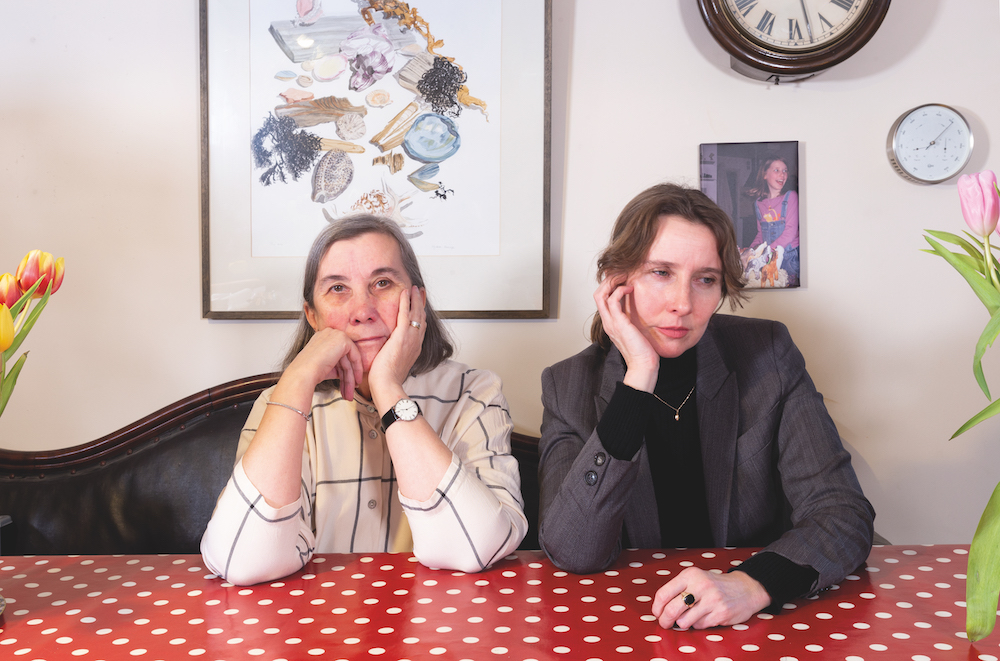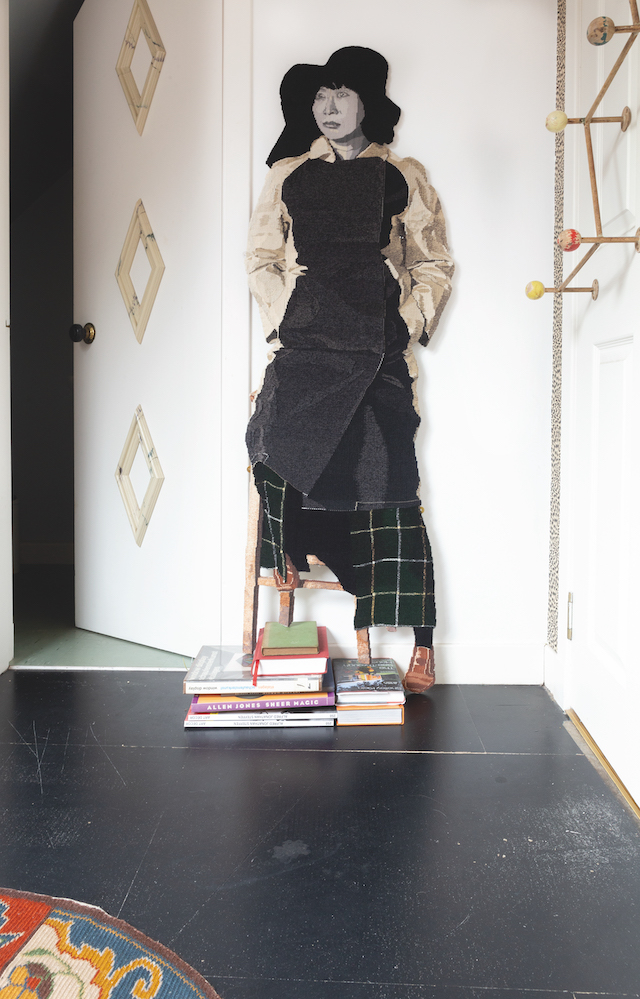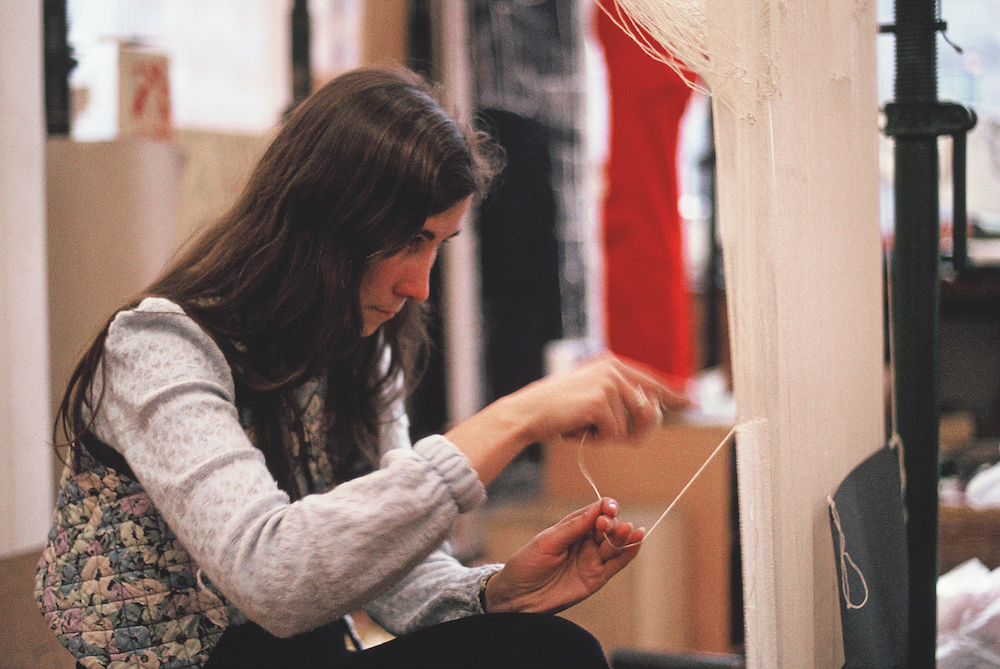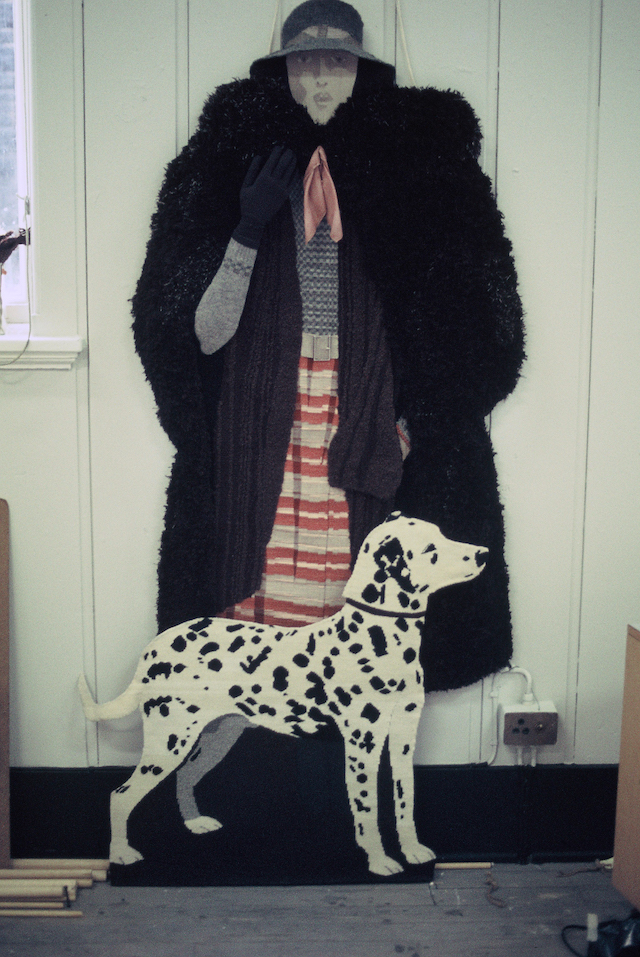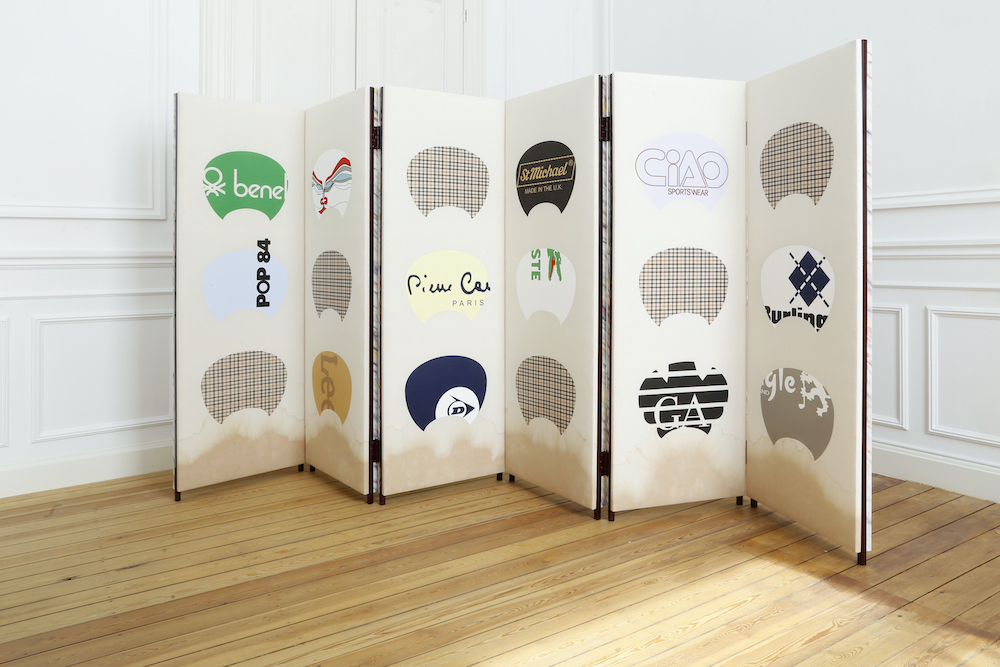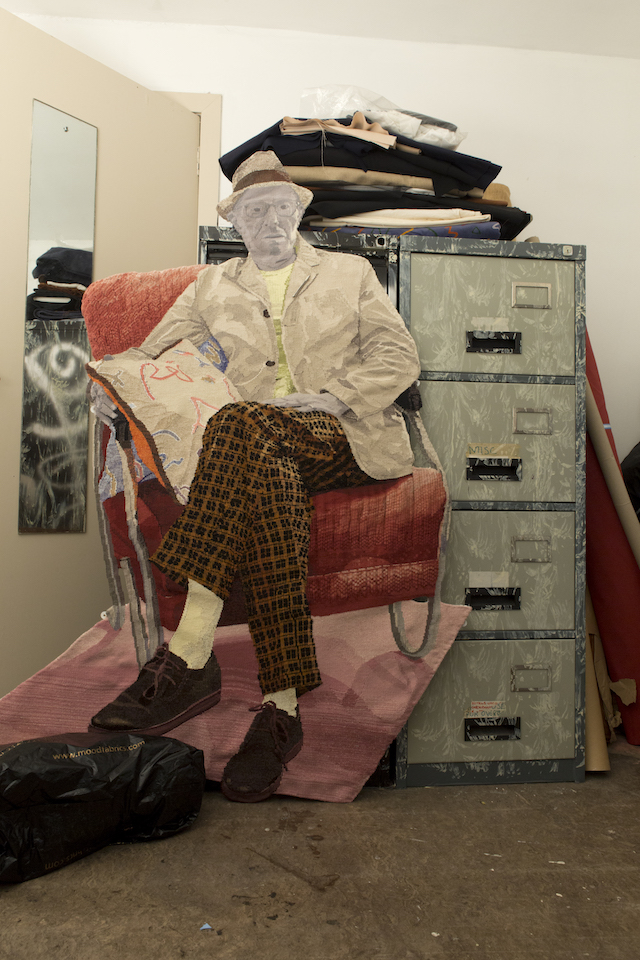Linsey Young – Curator of contemporary British art at Tate Britain – profiles the extraordinary work of female artists as told by their daughters. Part two shines a light on Rita McGurn and France-Lise McGurn

Rita McGurn was a self-taught artist and designer. She began work as an interior designer when she and her family moved to Zambia in the ’60s. Upon returning to Glasgow, she moved into production design on commercials and films. McGurn created an extensive body of work in a wide range of materials and across disciplines, and was commissioned to make the smokestack sculpture for the Twomax building in the Gorbals, which still stands, and can be seen on the Woman’s Library Tour of Glasgow. Painting, papier-mâché and crochet were among the central methods in her practice.
France-Lise McGurn is a Scottish painter who creates layered installations, often incorporating studio-made works with the gallery walls, floors and ceilings. Working indirectly from an archive of images, her figurative compositions are made intuitively and stretch from canvas to wall to evoke movement and the process of recollection. She has recently had exhibitions at Pasquart Kunsthaus Centre d’Art, Bienne; Tramway, Glasgow; and Simon Lee Gallery, London.
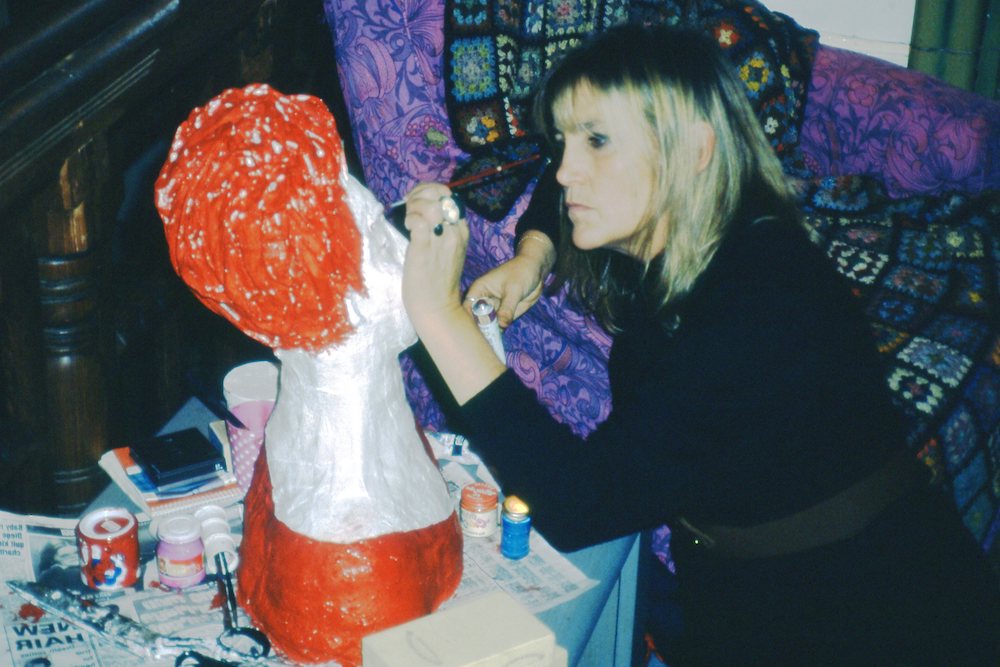
Linsey Young: When I was at university, I lived at the end of your road; we didn’t know each other at the time, but I clearly remember always trying to steal a look at your mum when I walked past the house. She was so beautiful and always seemed to be working on something fabulous that I couldn’t quite see from my position peering in from the street!
France-Lise McGurn: It’s so funny you used to pass by the window; I love that. It was such an open view; it never bothered mum that people could see in. We were always a very open house with an open-door policy too, always full and bustling. I used to get recognised in the street and asked, “Are you the girl who lives in the house with all the paintings?” She was always making, and she told me as a little girl she was constantly drawing and creating things, but that art school just didn’t seem like something she could do, because her grandparents – who raised her – thought they would need money. My memory of mum is that she would be cooking, painting, crocheting, moving furniture, painting it, scribbling in notebooks, and hosting the family, all at the same time and with equal energy.
She didn’t need to take herself away to paint in another room; there could be a full house, the telly on, the fire going, and she would be smashing plates in the garden to make a mosaic. I vaguely remember the beginning of her oil paintings, but it didn’t start with one – she was so prolific it started with 20 somehow. She certainly created in bodies of work; she would become obsessed with one material and the whole house would shift… It would be painted completely in leopard skin, or suddenly be populated by papier-mâché figures.

That sounds like the most perfect house to grow up in. Did your mum ever work with a gallery or have formal exhibitions?
It was! No, she never worked with a gallery in a formal way. She did have some exhibitions, in Compass Gallery in the early ’80s, and some organised with my dad, in Virginia Court and Ingram Street. Iota gallery, in Partick, Glasgow, were very supportive of Mum’s practice and commissioned a wall piece in 2014, and she had several public commissions, including the Grand Ole Opry, on the south side of Glasgow. She worked as a set designer, and in interior design, so making artwork was simply something she did all the time; it wasn’t with a view to exhibiting. I mean, she liked to, but the work was getting made either way!
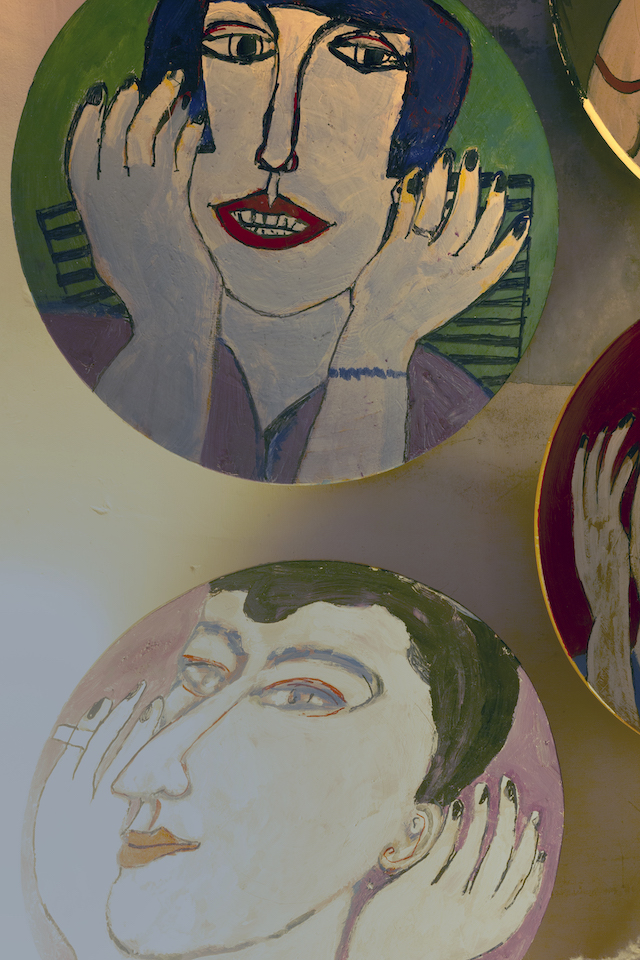
The feminist artists I’m researching often worked with domestic materials because they were available and affordable. I wonder if it was similar for Rita?
Very much so. Everything was fair game; any surface or material could be used. My mum was born in the Calton area of Glasgow; her grandad had a stall on the Barras market (he cut keys and sold pets if I remember rightly), and she had her own stall years later. The Barras had a huge impact on her, finding bits of whatever she could get her hands on. I think that’s why the crochet was such a big part of her work; she could do it anywhere, anytime, and it was easy to get job lots of wool. I remember somehow she got her hands on some IZAL toilet paper (the shiny stuff – if you know, you know), a lot of it, and it became a 15-foot figure which now stands in my dad’s hallway.
She would use anything that was lying around or not being used, even if just for a minute. There was a joke that if you stood still too long in our house, she would turn you into a sculpture, freeze you for soup, or paint you Hammerite blue. We all lost some good jumpers to those crochet figures, as stuffing or just stitched right in.

She has such a distinctive aesthetic – did she ever talk about artists or makers that influenced her?
Mum certainly drew influence from people she loved – like Chaïm Soutine, Philippe Starck – but to be dead honest, she wasn’t a follower; she didn’t have heroes. She would get enchanted by a painting, artist or designer, but then she could fall out of love with them. I recall a fleeting adoration of Paula Rego and Darcey Bussell, but she was mysterious like that, driven by something else – a kind of horror vacui.

She worked in set design?
She started working in interior decor in Zambia. My parents lived there for five or so years in the late ’60s and early ’70s, and she worked on set design for films and commercials when they got back. I believe she started on photography shoots and then in film with Charlie Gormley, a filmmaker and my Dad’s best pal. She later did theatre too, which she loved… maybe not some of the more corporate gigs, but I remember all the props: 300 fake fish in the bath in particular.
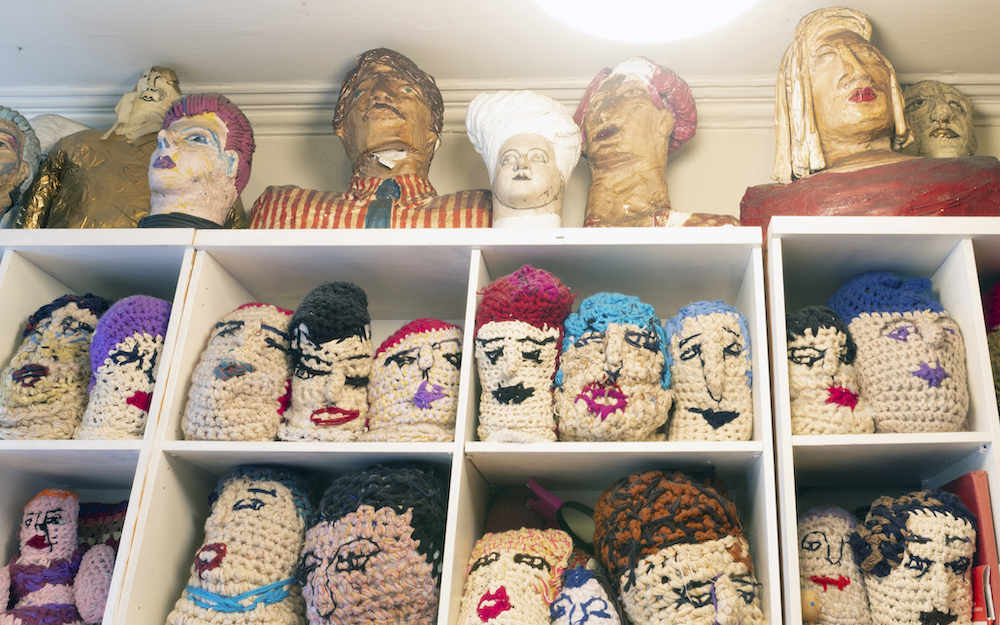
She must have been thrilled when you went to art school. Did you ever talk about your work together?
She was happy; however, we never really got to the stage where we discussed artwork together, because mainly she was a mum. It would have come eventually, but I didn’t have an exhibition to speak of when she was alive. She would definitely get worried… feared that I would be shit at it, or rejected. I remember her grimaced face asking if I had got accepted to art school. She was worried for me because I think she knew being in art could break your heart.
She was delighted for me, despite the fact she never got a chance to go herself, but it wasn’t her style to think like that; she simply loved making. Her lack of training didn’t bother her. She said she would be happy whatever her children did, as long as they were happy. The one exception was if we went into the police force…
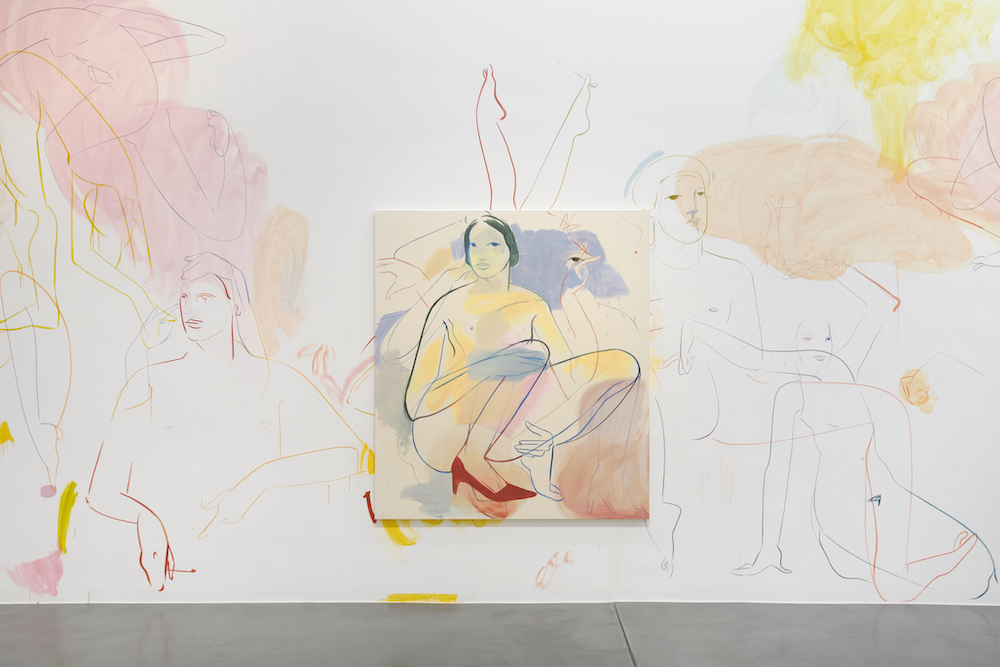
In terms of making work, has any element of her practice informed what you do?
Her wall paintings are a direct influence, and certainly my fixation with figuration started there. One of the most influential things about my mum’s work was her approach: I didn’t learn about the ‘serious artist in their studio’ until I went to art school. I realised when I got there that there was an incredibly pretentious view of artists, and they painstakingly laid out their palettes, discussing paint hues and theory. For me, work happened compulsively, constantly and with a lot of love. I was lucky to not feel afraid of it or have a restricted view. Of course, I have had a very different life than mum, and a lot of different opportunities and training, so my set up is more normal. But it carries through, her fearlessness and dedication.
Photography Morwenna Grace Kearsley
Special thanks to Peter McGurn

This article is taken from Port issue 28. To continue reading, buy the issue or subscribe here
